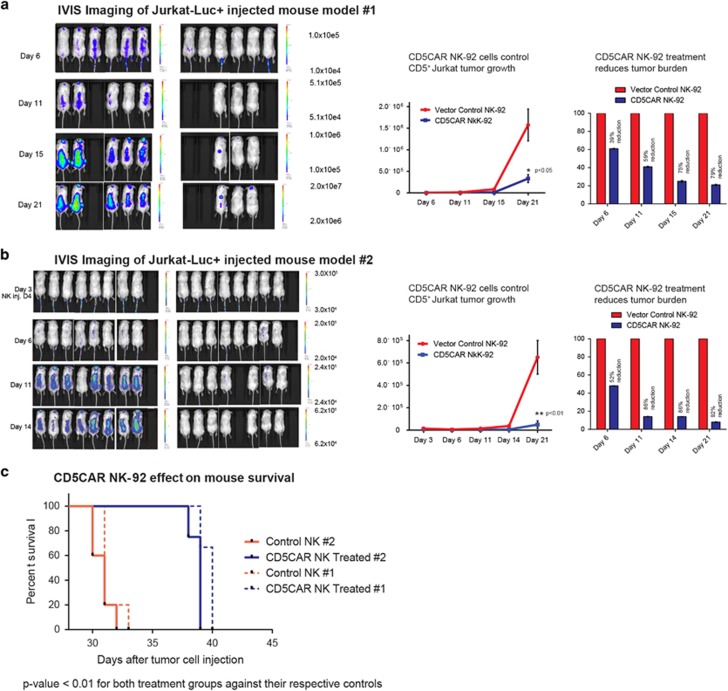Figure 6.
CD5CAR NK-92 cells demonstrate potent in vivo activity. (a) NSG mice were sublethally irradiated and, after 24 h, intravenously injected with 1 × 106 luciferase-expressing Jurkat cells (Day 1) to induce measurable tumor formation. Over the course of the NK-92 cell lifespan, mice were injected with a one course dose consisting of 15 × 106 control NK-92 or CD5CAR NK-92 cells concluding by day 11. On day 11, 2 mice died within 30 min of injection process likely due to stroke and NK-92 cell aggregation during procedure. On days 6, 11, 15 and 21, mice were injected subcutaneously with RediJect D-Luciferin and subjected to IVIS imaging. Subsequent maintenance dose consisting of 5 × 106 cells was administered through day 20. Control of the Jurkat-Luc+ tumor growth was quantified via luciferin signal (average light intensity) and plotted as a line graph. Tumor reduction is normalized against the vector control NK cell treatment and expressed in bar graphs showing % reduction. (b) A second group of NSG mice were injected with Jurkat-Luc+ cells and treated with CD5CAR NK-92 cells with a one-course dose consisting of 10 × 106 cells over the course of the NK-92 cell lifespan. On day 10, one mouse died as a result of injection procedure. RediJect luciferin was injected on days 3, 6, 11 and 14. Subsequent maintenance dose consisting of 5 × 106 cells was injected through day 19. Day 3 data was obtained to show tumor after Day 1 Jurkat-Luc+ injection. (c) CD5CAR NK-92 treated mice survive significantly longer than control in both Jurkat-Luc+ mouse models. Kaplan–Meier survival curve for CD5CAR NK-92 treated mice compared to vector control treated mice (Dotted lines represent Jurkat-Luc+ group 1, solid lines represent group 2). Log-rank (Mantel–Cox) test P-values as shown.

